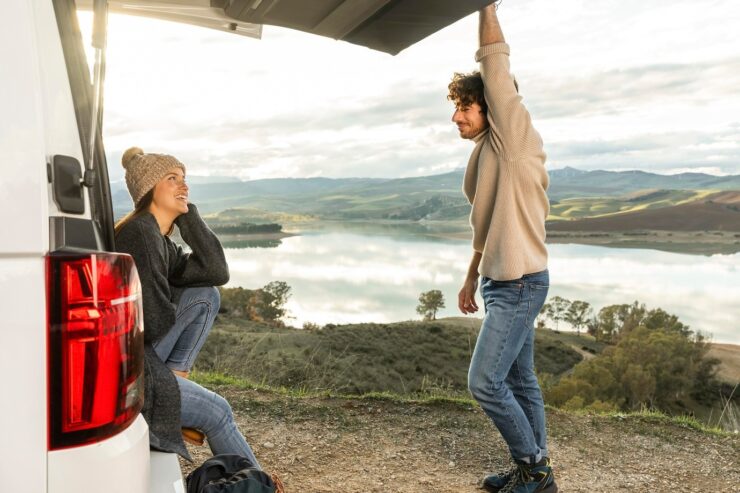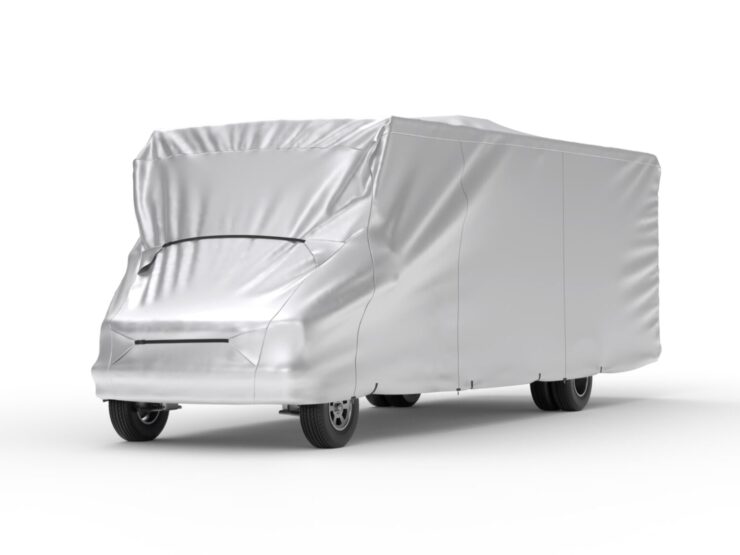For many, an RV is more than a vehicle; it’s a home away from home. Protecting your recreational vehicle from harsh weather conditions, dirt, and debris is paramount for sustaining its condition and ensuring its longevity.
A well-chosen RV cover can save you from costly repairs and extend the life of your home on wheels. Whether you’re storing your RV for the off-season or shielding it between adventures, an appropriate cover is an investment in preserving its value.
Keep reading to understand why picking the right cover is crucial, which features to consider, and how to properly use and maintain it.
Why Investing in a Quality RV Cover is Essential for Longevity

Leaving your RV exposed to the elements can lead to faded paint, rust, and even costly water damage, but a high-quality cover can prevent these issues. A well-made cover reflects sunlight and repels water, preserving both the appearance and structure of your RV.
With class C RV cover, you’re not only reducing the need for frequent cleaning but also safeguarding against potential mold growth inside.
Beyond preserving aesthetics, an RV cover offers added protection from theft and vandalism. Covers with lock systems provide an extra layer of security, making your RV less of a target. Compared to the costs of repairs, investing in a durable cover is an economical way to maintain your RV’s value and longevity.
Different Types of RV Covers and How to Choose the Right One
RV covers are designed to fit different types of recreational vehicles and climate conditions. Common classifications include Class A, B, and C RV covers, fifth wheels, and travel trailers. Material selection is crucial for selecting the right cover for your climate.
Heavy-duty, waterproof covers are essential in high moisture or snowfall areas, while lighter, breathable fabrics are suitable for dry conditions. Size and fit are also important, as too-tight or too-loose covers can cause wear and tear. Accurate measurements of your RV are crucial for selecting a cover that provides adequate protection.
Reputability and quality assurance are essential when choosing a cover. Class C RV covers from trusted suppliers come with warranties or guarantees, providing peace of mind with your purchase.
Key Features for Specific Climates
- High Moisture or Snowfall Areas:
- Heavy-duty waterproof fabric.
- Multiple layers for durability.
Dry and Sunny Areas:
- Lightweight and breathable materials.
- UV-resistant coatings to protect against sun damage.
Reputability and quality assurance are essential when choosing a cover. Class C RV covers from trusted suppliers come with warranties or guarantees, providing peace of mind with your purchase.
Essential Features to Look for in a Premium RV Cover

Premium RV covers offer advanced features to protect your vehicle from damage. They should have UV protection, multiple layers for durability, and water-resistance to prevent scratches on the RV surface. They should also allow ventilation to prevent condensation buildup.
Straps and buckles are essential for securing the cover in place. Zippers are a convenient feature for accessing the RV without removing the entire cover. Reinforced corners add durability to areas prone to wear. Reflective panels contribute to visibility and deflect sunlight.
These features combine practicality with superior materials for an all-weather defense system. Premium RV covers offer comprehensive protection, combining practicality with superior materials for an all-weather defense system.
Additional Features for Easy Maintenance
- Stain-resistant coatings for effortless cleaning.
- Storage bags to keep the cover protected when not in use.
- Repair kits included for addressing minor wear and tear.
Steps to Properly Cover Your RV and Guard Against Weather Damage
To apply an RV cover correctly, start by cleaning and drying the RV to prevent damage. Inspect for sharp edges and add padding where necessary.
Spread out the cover, identify the front and rear, and carefully guide it into place, starting from the roof and straightening it as you go. Pull the cover gently over the RV, ensuring it doesn’t snag on equipment.
Secure the cover with straps and buckles, keeping it snug and aligned with vents for proper airflow. Perform a final walkaround to confirm everything is secure, adjusting as needed. Regularly inspect the cover, especially after bad weather, to maintain its protective fit.
Maintaining Your RV Cover for Maximum Protection and Durability
Maintaining your RV cover is crucial for its longevity and protection. Regularly clean it according to the manufacturer’s instructions, using mild soap and water. Ensure the cover is free from harsh chemicals that could break down protective coatings. Inspect for signs of wear or damage, repair them promptly, and replace if damaged beyond repair.
Store the cover in a dry place to prevent mold and mildew growth. Many of them come with a storage bag for dust accumulation. Be aware of local weather conditions, as no cover is indestructible. In extreme weather, seek shelter in a garage or storage facility. A high-quality RV cover can provide years of dependable service and protection for your recreational vehicle.
Tips for Long-Term Cover Care
- Inspect Frequently: Look for loose straps, tears, or mildew spots.
- Clean Quarterly: Avoid high-pressure water to protect fabric coatings.
- Reinforce Weak Areas: Use adhesive patches for added durability.
A high-quality RV cover can provide years of dependable service and protection for your recreational vehicle. By selecting a high-quality cover, ensuring its proper application, and committing to regular maintenance, you can secure your RV’s condition and enjoy its comforts for many adventures to come.
Final Words
Overall, a robust RV cover is indispensable for shielding your vehicle from the havoc of environmental factors. By selecting a high-quality cover, ensuring its proper application, and committing to regular maintenance, you can secure your RV’s condition and enjoy its comforts for many adventures to come.

